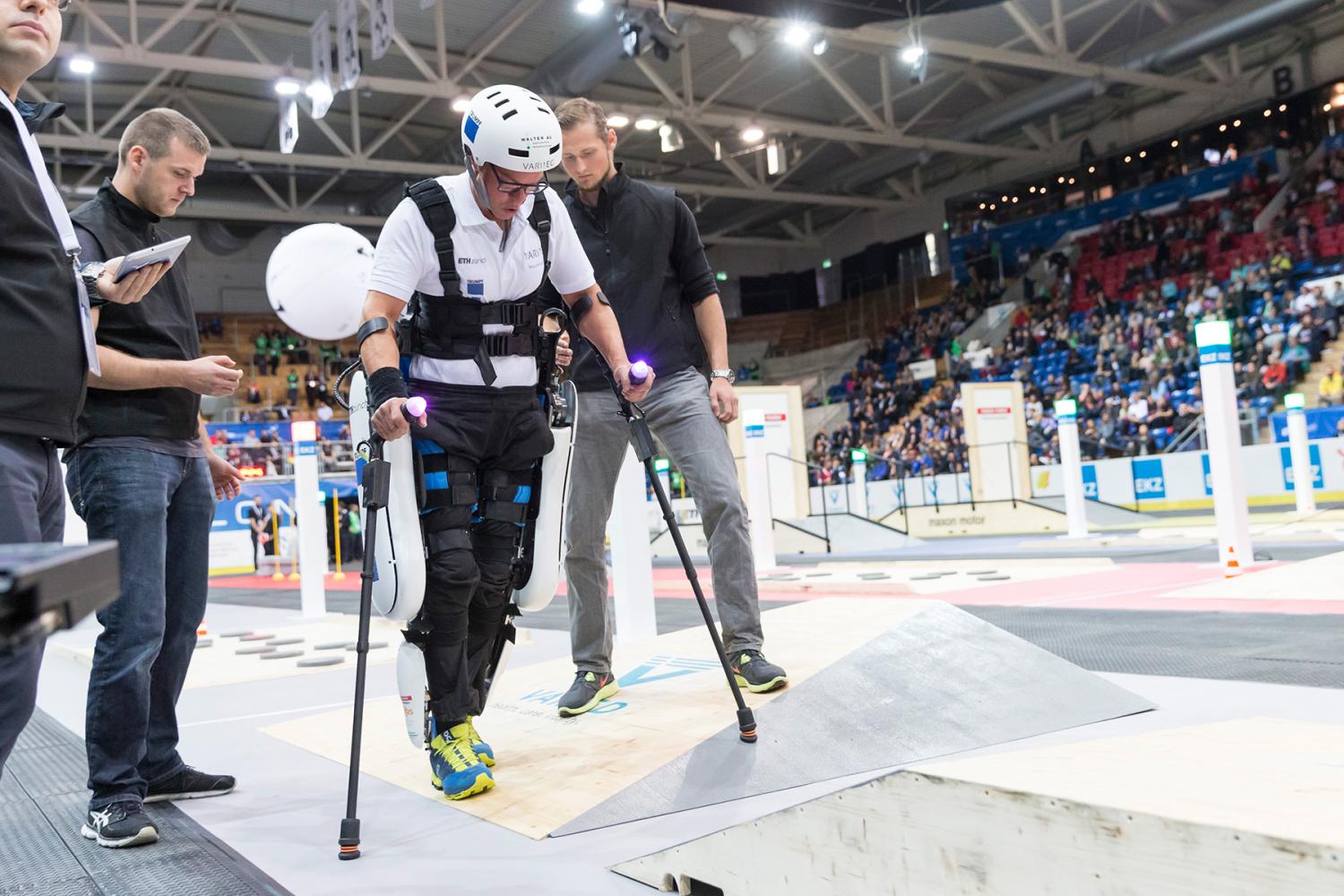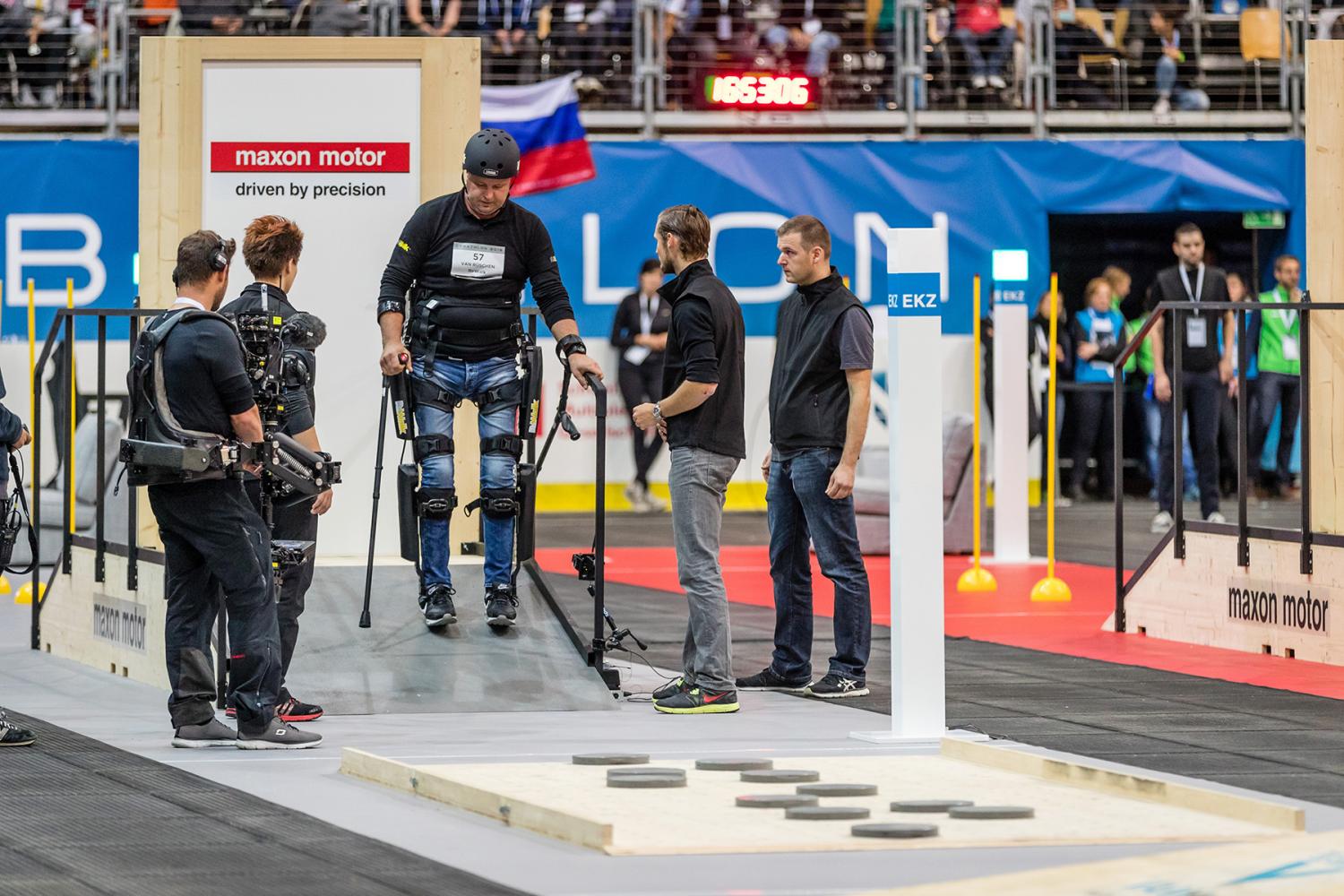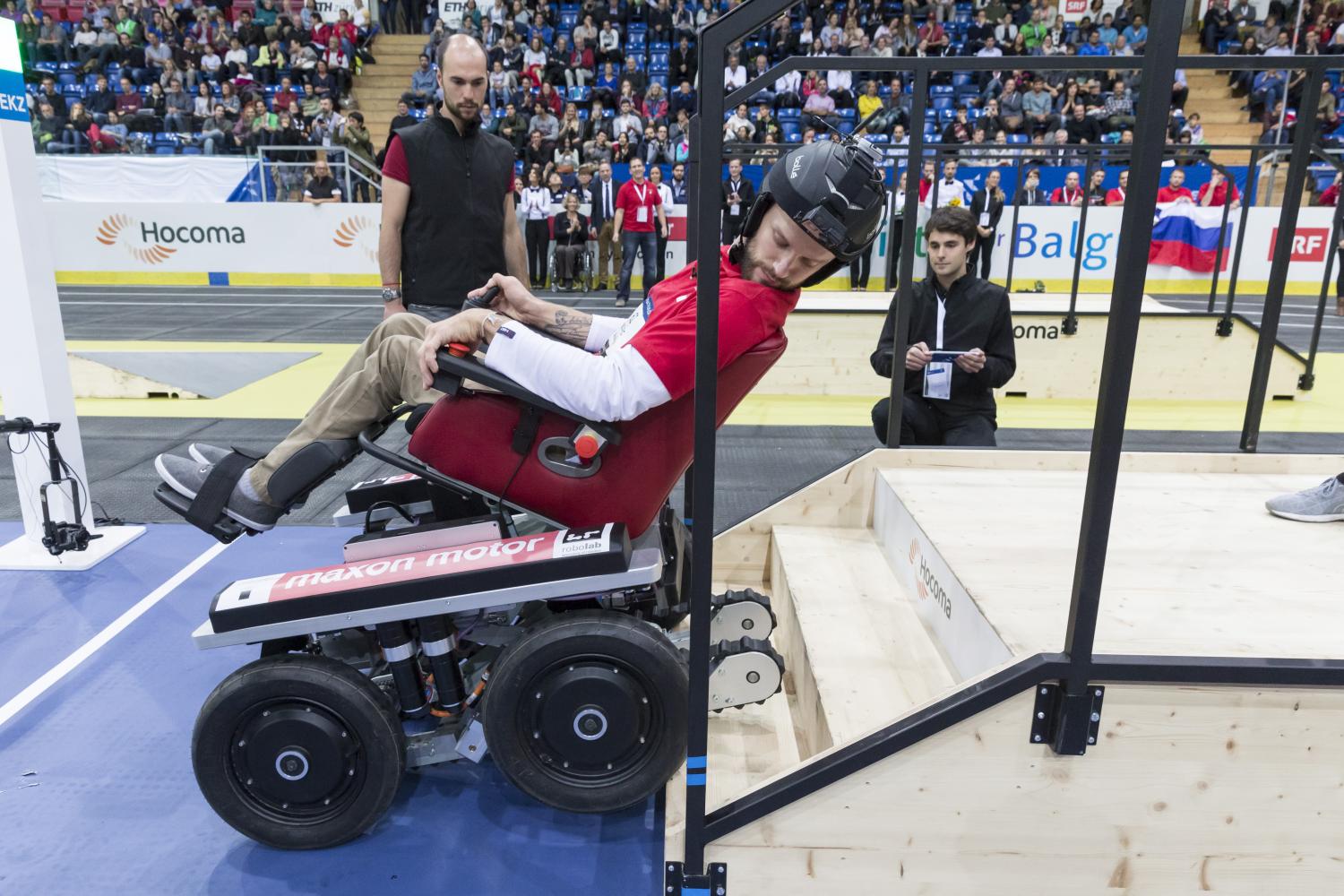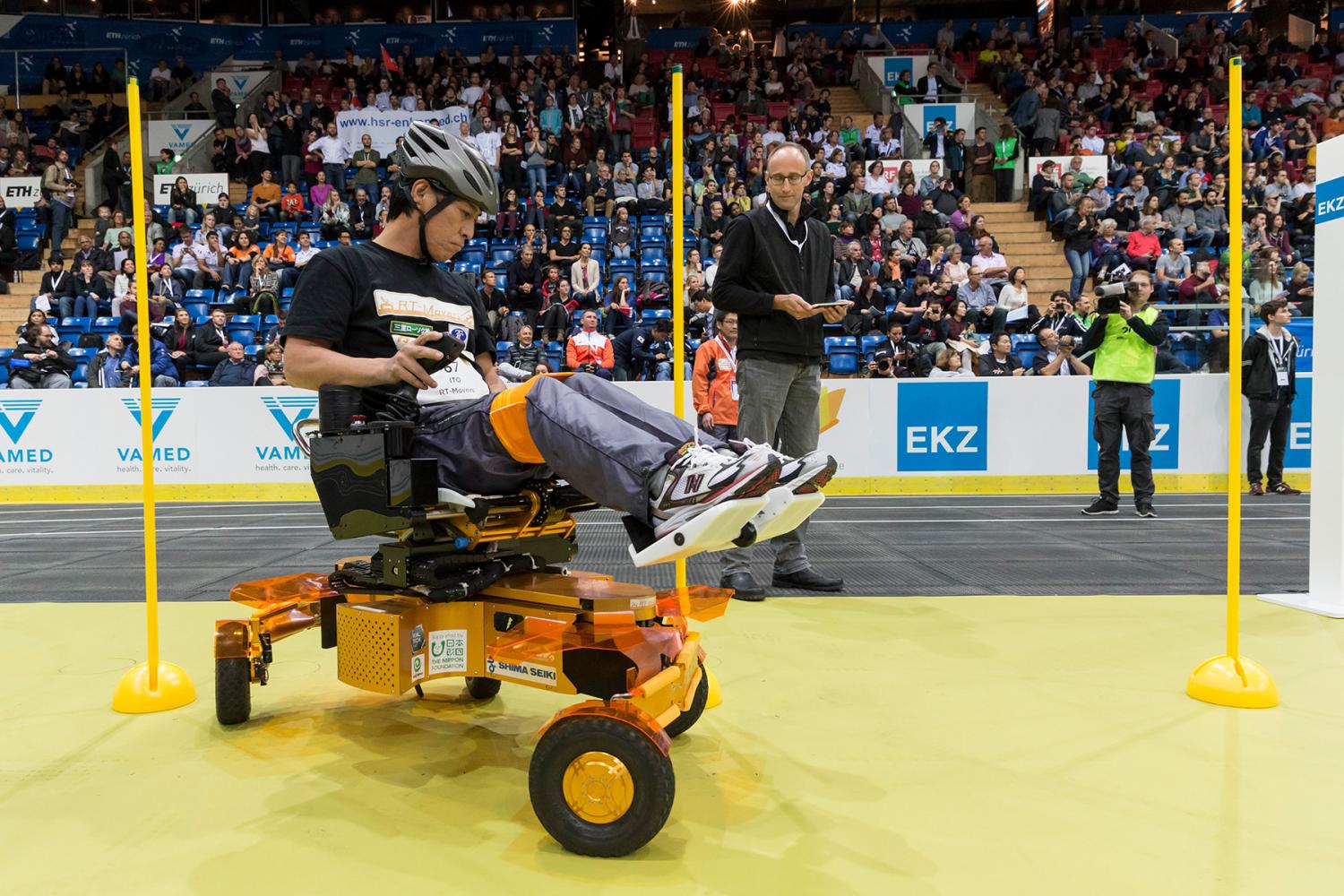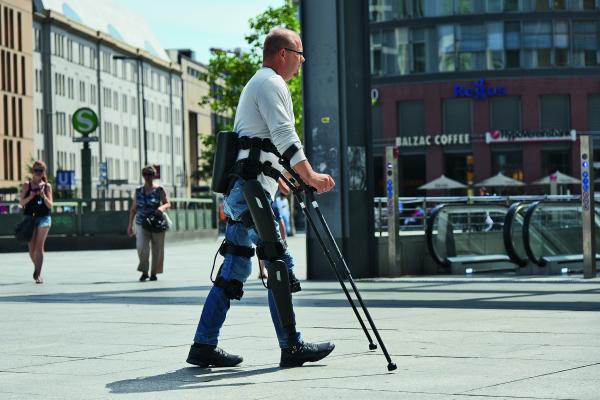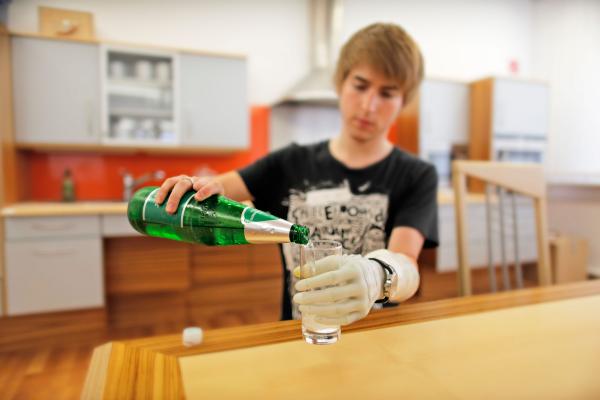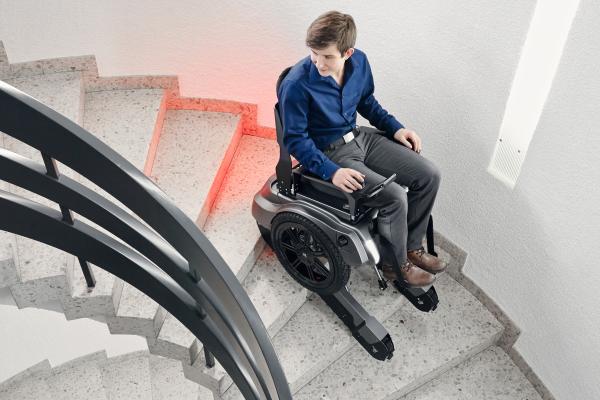To the cheers of more than 4000 spectators, Florian Hauser raises up his arms. He passed the competition on the last meters and won first place. At the stairs obstacle at the end of the course, the wheelchair showed its strength. Florian Hauser's team from the HSR University of Applied Sciences in Rapperswil, Switzerland, is celebrating. They designed and built the vehicle.
There were many scenes like this at the first Cybathlon, which was held on October 8 in Zurich. Almost 70 teams from all over the world traveled to Switzerland, among them students and successful businesses. They all wanted to show how good their prostheses, exoskeletons, and other technical aids are.
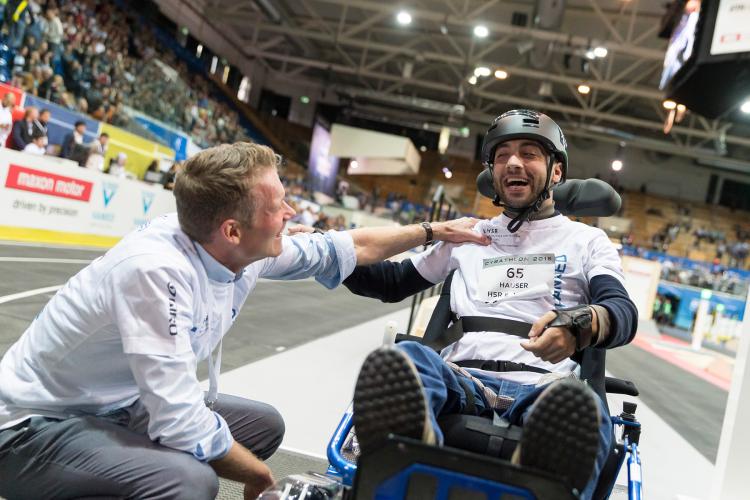
Florian Hauser celebrates victory in the motorized wheelchairs category. His team, HSR Enhanced, is part of the HSR University of Applied Sciences in Rapperswil (Switzerland).
The machine-supported athletes competed in six disciplines: prosthetic legs, prosthetic arms, exoskeletons, motorized wheelchairs, bicycle races with electric muscle stimulation, and virtual racing using thought control.
Everyday situations as obstacles
Speed wasn't everything. It was much more important to overcome all of the obstacles, which were inspired by everyday situations. Pilots with hand prostheses had to slice bread or hang laundry with pins. Wheelchair riders had to overcome uneven terrain or stairs. The main goal of the Cybathlon is to reduce obstacles for people with disabilities and offer them technologies that stand up to the challenges of daily life. Affected people need to be involved in the development of new devices at an early stage so that engineers know exactly which aspects they have to consider. This kind of collaboration was demonstrated impressively at the Cybathlon – not just to the crowd at the stadium, but to a global audience. About 150 media representatives reported about the event that was organized and hosted by ETH Zurich.
The organizers were very happy with the result. Everything went flawlessly. There were no injuries, and in each discipline, three pilots and their teams took home medals. However, “the true winners are all those people who suffer restrictions in their daily lives because of physical disabilities,” says Robert Riener, the ETH Zurich professor who invented the Cybathlon. “Today we showed that we are able to achieve great things if we consider the needs of the affected people in the development of assistive technologies. I am very proud of the work of all of the teams, and I am glad to see the worldwide recognition that the Cybathlon is receiving.
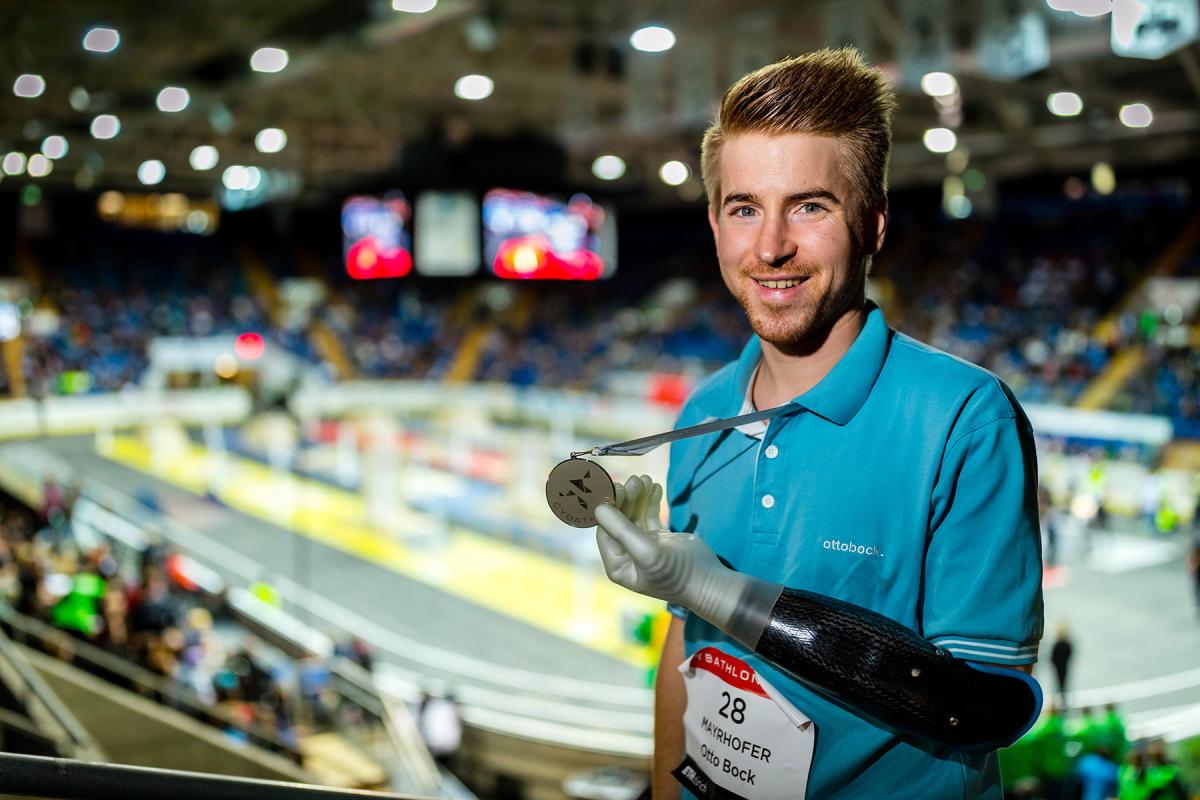

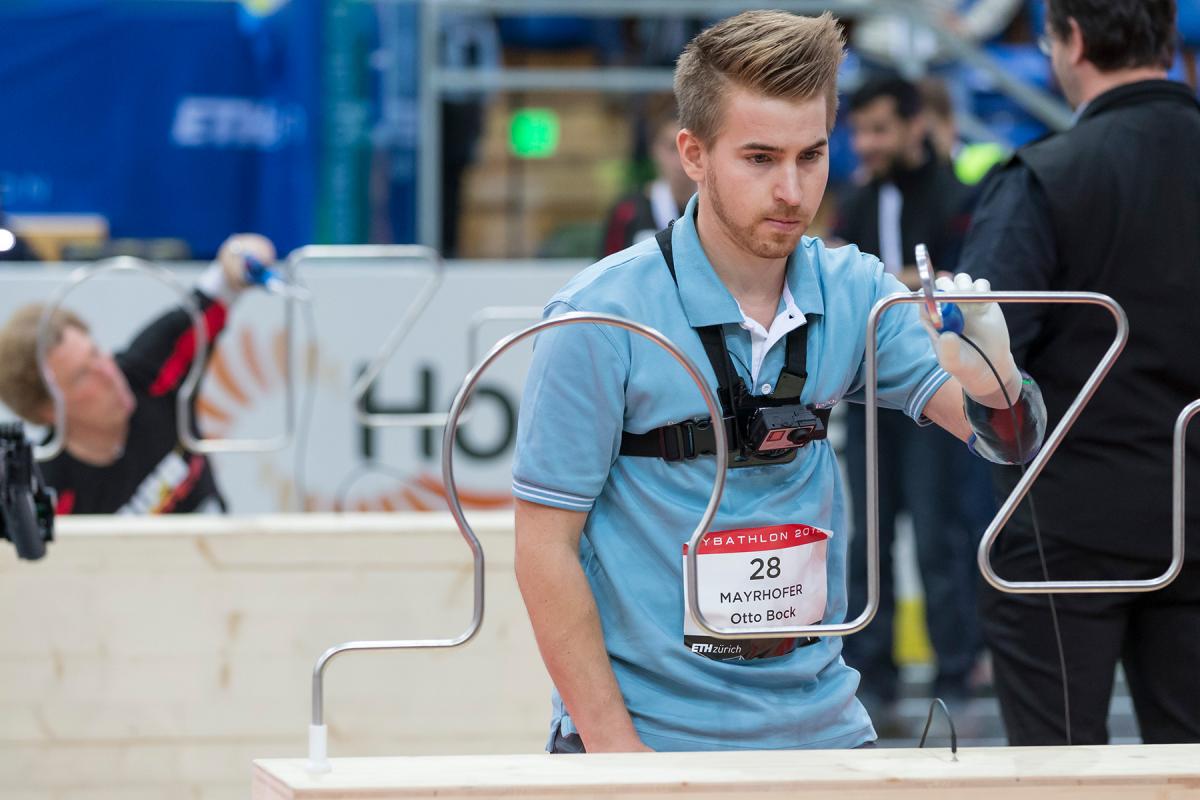
Patrick Mayrhofer won 2nd place in the arm prosthesis race. Read more about him here.
Returning to Zurich in four years
Robert Riener is certain that the Cybathlon will continue. There are inquiries from many countries and intensive talks are well underway. In all likelihood, there will be several smaller events all over the world in the years to come. The main event could be held in Switzerland again, four years from now. The four-year schedule seems like a natural choice, since the media has already referred to the Cybathlon as a bionic version of the Olympics. What new technological developments will be presented in the years to come? It will certainly be interesting!
The gold medal winners:
- Brain-computer interface race: Numa Poujouly - Team Brain Tweakers (Switzerland)
- Functional electrical stimulation bike race: Mark Muhn - Team Cleveland (US)
- Powered arm prosthesis race: Robert (Bob) Radocy - Team Dipo Power (Netherlands)
- Powered exoskeleton race: Andre Van Ruschen - Team ReWalk (Germany)
- Powered leg prosthesis race: Helgi Sveinsson - Team Rheo Knee (Iceland)
- Powered wheelchair race: Florian Hauser - Team HSR Enhanced (Switzerland)
maxon motor and the Cybathlon
The Swiss drive specialist maxon motor supported the Cybathlon as a sponsor and partner. The company was present at the games with a workshop for the teams and a small exhibition for the spectators. Additionally, maxon equipped many of the participating teams with drives.

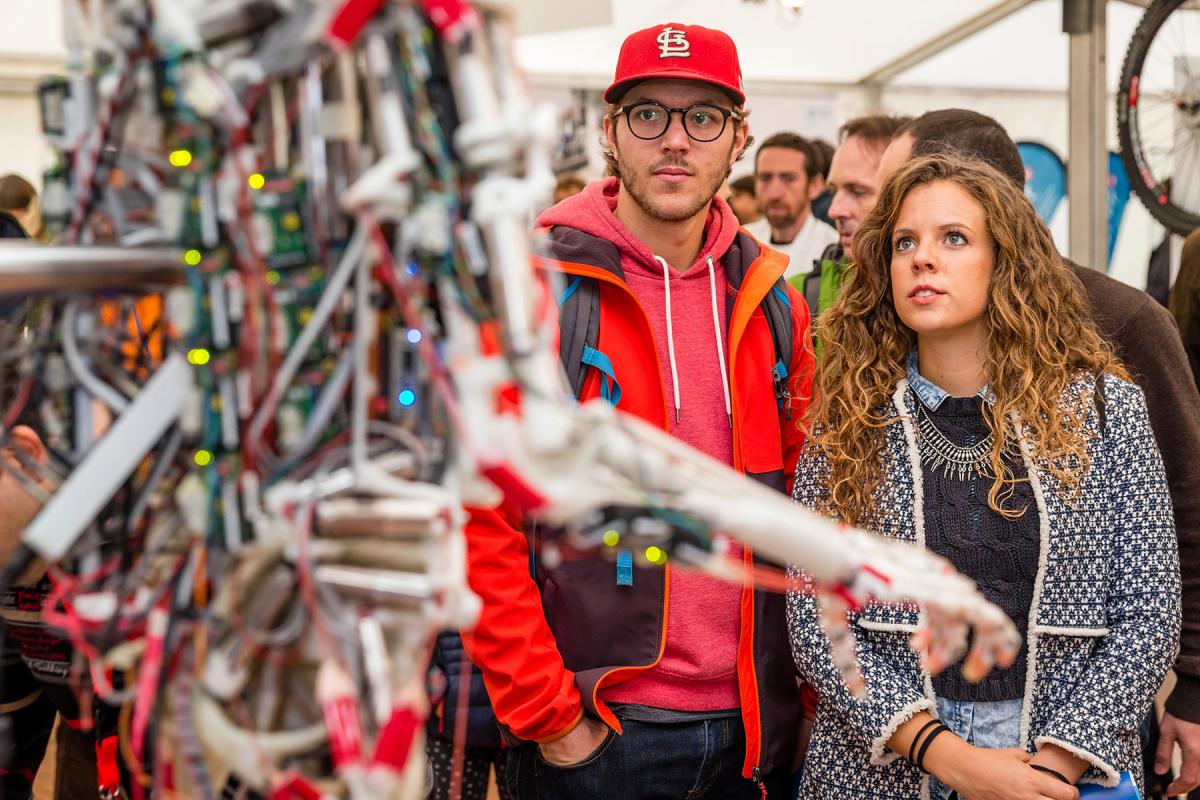

maxon @ Cybathlon


